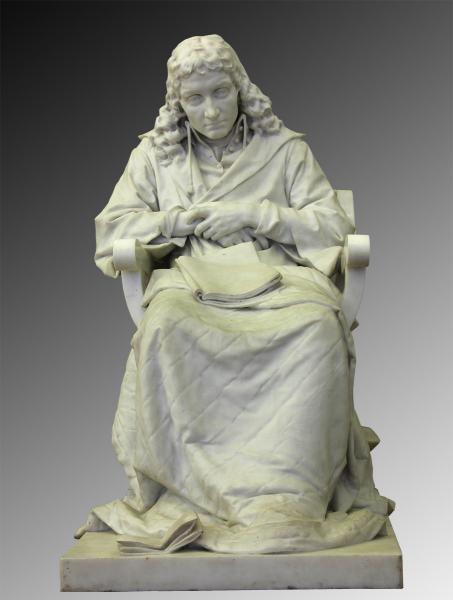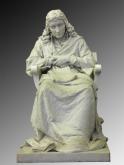Spinoza
1887
- Marble. 145 х 85 х 118
- Ск-461
Пост. в 1926 году из Академии художеств
- Period Late 19th century
- CategoryPortrait
- Share
This sculpture depicts Benedict de Spinoza, who formulated a tremendous criticism of the social injustice, was an opponent to the monarchy and a supporter of the republic, the author of "Ethics", and was expelled for godlessness from the synagogue, from which he renounced his faith. The idea of representation of Spinoza came to Antokolsky in Italy almost simultaneously with the idea of creating the image of Christ.
This is not a coincidence as Antokolsky saw in the life and activity of Spinoza an example of devotion and self-abnegation. This statue represents the great philosopher sitting on an armchair. As Spinoza was sick and infirm, he was absorbed in his thoughts. In this sculpture, his pensive attitude and heavy movements with his slender and lean hands resting on his chest depict his condition. The sculptor underlined Spinoza’s modesty and composure, as well as his strength and elevation of mind. The consciousness of his rightness and, at the same time, his sorrowful submission to his fate is palpable thanks to the meditative expression on his exalted face and his faint smile depicted by his twisted lips. The sculptor considered that this statue was significantly better than his previous works in terms of artistic technique.
Benedicto de Spinoza (Benedict de Spinoza) (1632–1677), or Baruch Spinoza, was an eminent Dutch philosopher, one of the great rationalists of the 17th century.

